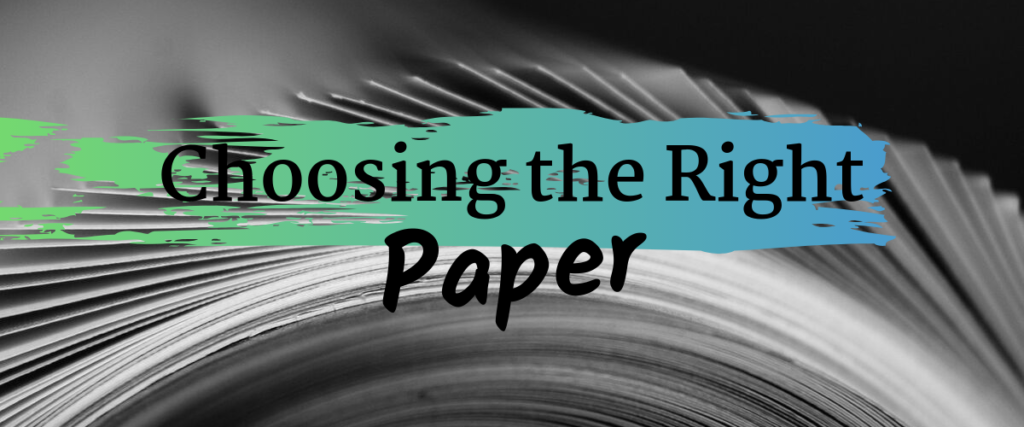
There are a lot of decisions to make when you begin planning a print project. You need to consider your messaging, your graphics, and your color theme. It’s important to pick the right font and decide on the most effective format for your printed piece. Is offset printing the right way to go or does it make more sense to have your piece printed on a digital press?
Related: Digital vs. Offset Printing: Which is Best for Your Business?
And then there’s the paper. Which weight is best? Should you use cover stock? Coated or uncoated? What about brightness? And what does opacity mean?
Your sales representative can advise you on all of these decisions, but it helps to have a basic understanding of the different types of paper – and which types of projects they’re best suited for.
Paper Weight
Paper weight is expressed in pounds, usually with an “lb.” designation or sometimes using a “#” symbol. You’ve probably heard paper referred to as 80 lb. stock or 20 lb. stock. But what does that mean, exactly? Paper weight is measured by weighing 500 sheets of uncut paper. The higher the weight, the heavier and thicker the paper. Of course, complicating the matter is the fact that different kinds of paper can have different uncut sizes, so it’s important to know what type of paper you’re talking about. You may also see the weight or thickness of paper measured in points or GSM. In all cases — regardless of how the paper is measured — the higher the number, the thicker the paper.
Types of Paper
It’s likely that you use bond paper in your office copier or desktop printer. Typically, you’ll see bond paper in weights anywhere from 20 to 28 lbs. Pages of books, on the other hand, are usually printed on text paper with a weight of 70 to 100 lbs. This type of paper also works well for brochures and flyers. Cover stock, also called cardstock, is heavy – 80 to 120 lbs. – and rigid, so it’s not good for projects that require folding. It’s important to think about the type of paper when you’re considering different weights and thicknesses. For example, 100 lb. cover stock is about twice as thick as 100 lb. text paper.
Coatings
There are also differences in paper based on whether a sealant, called a coating, has been applied to the surface of the paper. A coating will affect the way the paper feels and the amount of shine. There are different types of coatings, and not all of them produce a shiny effect. Coatings range from glossy (very shiny) to satin, matte, and dull.
Why choose coated paper?
Coated paper absorbs less moisture, so ink tends not to spread, thus producing a crisper, sharper image. Uncoated paper can cause your images to look blurry and dull. A coating also reduces the amount of your image that shows through to the back of the page (known as “show-through”), even on thin paper.
Why choose uncoated paper?
Coated paper can be difficult to write on, for one thing. In addition, images on uncoated paper can look warmer and more natural, and you’ll find a better selection of colors and textures in uncoated stock compared with coated stock, such as a smooth or linen texture.
Opacity and Brightness
Finally, there’s opacity and brightness. Opacity refers to the amount of light the paper allows through – and therefore the amount of “show-through.” Paper with 100% opacity, for example, allows no show-through. Brightness refers to reflected light. Brighter paper tends to be more readable, and ink looks more vibrant and colorful on brighter paper. You’ll see brightness referred to with a number, such as “94 Brightness.” Brightness scores run from 0 to 100. The higher the number, the higher the brightness.
There’s a lot to consider when choosing the paper for your print project. Working with your sales representative, you’ll want to view some paper samples and consider different textures and finishes. The paper you choose will be tied to the function of your printed piece. Some important considerations include whether the piece will need to fold, whether it needs to be more rigid (such as a direct mail postcard or business card), and whether you need to be able to write on the paper (such as a calendar, letterhead, or envelope).

Deborah Morrison